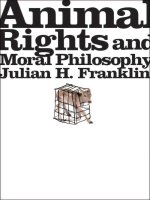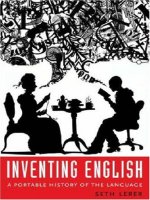columbia university press an end to poverty 2004
Bạn đang xem bản rút gọn của tài liệu. Xem và tải ngay bản đầy đủ của tài liệu tại đây (24.99 MB, 288 trang )
an end to poverty
?
GARETH STEDMAN JONES
A N E N D TO
P OV E RT Y ?
A H ISTO R I CAL DEB AT E
C O LU M B I A U N I V E R S I T Y P R E S S N E W YO R K
Columbia University Press
Publishers Since 1893
New York Chichester, West Sussex
Copyright © Gareth Stedman Jones,
First published
by Profile Books Ltd, London
All rights reserved
Library of Congress Cataloging-in-Publication Data
A complete CIP record is available from the Library of Congress.
ISBN
‒
‒
‒
(cloth : alk. paper)
Columbia University Press books are printed on permanent and
durable acid-free paper.
Printed in the United States of America
To my mother
CONTENTS
Acknowledgements
ix
Introduction 1
I The French Revolution 16
II The Reaction in Britain 64
III The Reaction in France 110
IV Globalisation: the ‘Proletariat’ and the
‘Industrial Revolution’ 133
V The Wealth of Midas 163
VI Resolving ‘The Social Problem’ 199
Conclusion 224
Notes
236
Index
271
Index 271Index
This book has been written to accompany the Anglo-
American Conference of the Institute of Historical Research,
whose theme in
was ‘Wealth and Poverty’. I wish to
thank the Director of the Institute, David Bates, for encour-
aging me to undertake this assignment. I would also like to
thank Peter Carson, Penny Daniel, Maggie Hanbury, Sally
Holloway and Tim Penton for the part they have played in
the publication of this book.
The thinking which shaped it is to a large extent the
result of discussions and seminars which have taken place
at the Centre for History and Economics at King’s College,
Cambridge since
. I wish to thank the John D. and
Catherine T. MacArthur Foundation which has so gener-
ously supported the activities of the Centre. I have learnt
from many who have participated in the intellectual life
of the Centre, but especially from Emma Rothschild who
provided constant inspiration and encouragement, while I
was writing this book. Those who have helped to manage the
Centre have also been of invaluable assistance, in particular
ACKNOWLEDGEMENTS
Inga Huld Markan, Jo Maybin, Rachel Coffey and Justine
Crump.
There are many others who have provided important
suggestions, insights or help as this book was being prepared.
I would particularly like to mention Robert Tombs, Daniel
Pick, Tristram Hunt, Michael Sonenscher, Istvan Hont,
David Feldman, Barry Supple, Sally Alexander and Daniel
Stedman Jones. Finally, a special thanks to Miri Rubin who
persuaded me that it was possible to write this book and did
so much to help it towards its completion.
Acknowledgements
ix
This book employs history to illuminate questions of policy
and politics which still have resonance now. It aims to make
visible some of the threads by which the past is connected
with the present. It does so by bringing to light the first
debates, which occurred in the late eighteenth century,
about the possibility of a world without poverty. These
arguments were no longer about Utopia in an age-old sense.
They were inspired by a new question: whether scientific
and economic progress could abolish poverty, as tradition-
ally understood. Some of the difficulties encountered were
eerily familiar. Many of the problems which politicians and
journalists imagine to have arisen in the world only recently
– globalisation, financial regulation, downsizing and com-
mercial volatility – were already in the eighteenth century
objects of recurrent concern.
It is of course true that the world in which discussion of
these issues first arose was very different from our own. It was
dominated by the revolutions of
in America and
in
France, as well as by the first movements to overcome slavery
INTRODUCTION
An End to Poverty?
2
and empire. The arguments discussed in this book took place
in a period which witnessed the overturning of ancient forms
of sovereignty across Europe, direct assaults upon monarchy,
aristocracy and church, crises of religious belief, the emer-
gence of ‘the common people’ as an independent political
force, and a war fought across all the oceans of the world.
But to a greater degree than we are prone to imagine,
those upheavals and their legacy are still relevant to us. Our
conceptions of the economy, both national and interna-
tional, and its relationship to political processes are still in
some ways shaped by the conflicts discussed in this book.
So are the relationships between religion, citizenship and
economic life. Those who doubt the relevance of history
because they believe that the world was made anew by the
defeat of Communism, the end of the Cold War, and the
demise of socialism at the beginning of the
s, do not
escape its hold. They simply become the guileless con-
sumers of its most simple-minded reconstructions. Those
who devised the new reform programmes of post- socialist
parties, desperate to remove any residue of an old- fashioned
and discredited collectivism, hastened to embrace a dereg-
ulated economy hopefully moralised by periodic homilies
about communitarian sentiment. By doing this, they
imagined themselves to be buying into an unimpeachable
and up-to-date liberal tradition handed down in a distin-
guished lineage of economists and philosophers inspired by
the
laisser faire
libertarianism of Adam Smith’s
laisser faire libertarianism of Adam Smith’s laisser faire
The Wealth
of Nations
.
Introduction
3
This book reveals that such assumptions are at best
dubious and, for the most part, false. The free market indi-
vidualism of American conservatives and the moral author-
itarianism which often accompanies it are not the products
of Smith (although they certainly draw selectively upon
certain of his formulations), but of the recasting of politi-
cal economy in the light of the frightened reaction to the
republican radicalism of the French Revolution.
Smith’s analyses of ‘moral sentiments’ and commercial
society were not the exclusive possession of any one political
tendency. The battle to appropriate his mantle was closely
intertwined with the battle over the French Revolution itself.
Modern commentators are agreed that Smith was not in any
distinctive or meaningful sense a Christian, while those who
wrote about him at the time strongly suspected it; worse
still, at least for contemporaries, the evidence provided by
his revisions to the
edition of
The Theory of Moral Sen-
timents
, which he had originally written in
, suggested
that at the end of his life he was even less of a Christian than
before. This was not merely a minor or incidental quirk in
Smith’s picture of the world, it informed his fundamental
conception of human motivation as well as his theory of
history. In
The Theory of Moral Sentiments
, Smith wrote of
the ambition which drove on ‘the poor man’s son’ to strive
to become rich and, if successful, to advertise his newfound
status by procuring ‘mere trinkets of frivolous utility’. After
a disquisition on the impossibility of translating wealth into
happiness, Smith concluded:
An End to Poverty?
4
Power and riches appear then to be, what they are,
enormous and operous machines contrived to produce a
few trifling conveniences to the body, consisting of springs
the most nice and delicate, which must be kept in order
with the most anxious attention, and which in spite of all
our care are ready every moment to burst into pieces, and
crush in their ruins their unfortunate possessor.
Nevertheless, he continued, ‘It is well that nature imposes
on us in this manner. It is this deception which rouses and
keeps in continual motion the industry of mankind.’
1
The idea that some kind of trick or self-deception was the
basic motivating factor behind human activity, but that it
was nevertheless to be cherished – because it explained why
mankind was induced to ‘found cities and commonwealths,
and to invent and improve all the sciences and arts, which
ennoble and embellish human life’ – was difficult to inte-
grate either into Christianity or into what in the years after
was presented as a post-Christian republican alterna-
tive. Smith’s picture derived from classical sources, part stoic
and part epicurean. It sat ill with Christian evangelicalism.
Nor did it accord well with counter- or post- revolutionary
apologias for aristocracies, merchants, established churches,
low wages or the outlawing of combinations of labourers.
But then nor could it be said to endorse republicanism,
egalitarianism, democratic representation or the toppling
of aristocracies. Supporters and opponents of the Revolu-
tion, therefore, annexed different parts of Smith’s picture
Introduction
5
of commercial society to support rival visions of social and
political life.
This story of the bifurcation of Smith’s legacy is relevant
to the present. On the one side, anti-republicans married a
version of Smith to a bleak possessive individualism under-
pinned by Christian evangelical theology. This authoritar-
ian but anti-paternalist philosophy was elaborated into
what became known in Britain as ‘liberal Toryism’ and it
remained dominant in the ‘Treasury view’ of economic
and welfare policy from the aftermath of the battle of
Waterloo down to the criticisms of Keynes and the end of
the gold standard in
.
2
In modified form, parts of it have
survived and continue today in the neo-conservative ethos
of American Republicanism.
One extreme bred another. It was this conservative and
anti-utopian transformation of political economy which in
turn produced by way of reaction the genesis of revolution-
ary socialism. Especially influential was Malthus’s
Essay on
the Principle of Population
of
. The population theory
provided the main bulwark against further attempts to
enlarge the framework of collective welfare provision for
around a century. Furthermore, its replacement, both in
economic theory and in social policy of a language of civil
society and political participation by a language of ‘natural
forces’, legitimated and institutionalised a fear and suspi-
cion of the ‘labouring poor’ which the reaction against the
Revolution had already done so much to intensify.
For conservatives, the Revolution was almost from the
An End to Poverty?
6
beginning a demonstration of the fallacy of ignoring the
primacy of the passions over reason in human affairs. In
the course of the
s, this outlook, deeply rooted in Chris-
tian assumptions about original sin, was translated into the
terms made available by the Newtonian language of natural
theology and was extended into the sphere of sexual grati-
fication. By treating reproduction as a biological impera-
tive and the primal driving force behind the activities of
the mass of humanity, past, present and future, Malthus
subordinated all history, law and culture to an instinctual
non-social and ahistorical force. Once this conception had
been implanted at the heart of political economy, the core of
economics was henceforth situated in the realm of nature.
It was for this reason that a crude behavioural approach to
human psychology came to be considered the appropriate
method in the development of economic theory.
What this ignored was the fact that observed regularities
in the process of production, consumption and exchange,
far from belonging to nature, were only possible when such
transactions were regulated according to law and custom.
It was for this reason that Hegel, who was a careful reader
of Smith, treated the emergence of ‘civil society’ and the
formalisation of its anatomy in political economy as dis-
tinctive products of the modern world. For ‘civil society’
presupposed a set of legal and cultural norms within which
a ‘system of needs’ could develop. It presupposed the over-
throw of the violence and arbitrariness of slavery and feu-
dalism.
Introduction
7
In Germany, Hegel’s optimistic and moderately progres-
sive picture of civil society was also pushed on to the defen-
sive by a combination of fundamentalist pietism, aristocratic
reaction, possessive individualism and a romantic reasser-
tion of the divine right of monarchy.
3
Marx’s redescription
of Hegel’s conception of civil society, what he called ‘the
capitalist mode of production’, also therefore drew more
upon Malthus than upon Smith and Hegel in its depiction
of the economy. The economy was depicted as an arena in
which man had become dominated by his own creations
and had reverted to a language of ‘natural forces’ to describe
his relations with his fellow beings. As Marx wrote to Engels
about
The Origin of the Species
in
:
It is remarkable how Darwin rediscovers, among the beasts
and plants, the society of England with its division of
labour, competition, opening up of new markets, ‘inven-
tions’ and Malthusian ‘struggle for existence’. It is Hobbes’
bellum omnium contra omnes
[the struggle of all against
all] and is reminiscent of Hegel’s
Phenomenology
in which
Phenomenology in which Phenomenology
civil society figures as an ‘intellectual animal kingdom’,
whereas, in Darwin, the animal kingdom figures as civil
society.
4
Thus, both in the dominant language of political economy
and, perversely, in what was to become the most influ-
ential critique of political economy, a strange consensus
conspired to push the legal, institutional and cultural
An End to Poverty?
8
dimensions of the analysis of commercial society to the
margins.
Could there have been an alternative to this conservative
trajectory and the revolutionary communism it provoked
in response? What of the use that the republican support-
ers of enlightenment and the Revolution, Antoine-Nicolas
Condorcet and Thomas Paine, made of Smith and other
advances in the eighteenth-century moral and social sciences,
to form the social underpinnings of a viable republic? As
this book makes clear in its discussion of the reaction to the
proposals of Condorcet and Paine in anti-Jacobin England
and post-Jacobin France, such an alternative was virtually
smothered at birth. Even when its protagonists were not
literally burnt in effigy – as Paine was all over England in
the early
s – or pushed like Condorcet to a premature
death, their proposals were radically misrepresented. Nor
was there a strong constituency pushing for such policies
among those supporting the ideals of the Revolution. Mod-
erates simply hoped that post-
France would resemble
post-
England. But among those still pressing for reform
at home, Smith was henceforward harnessed together with
Malthus. Those who seriously questioned this equation
were relegated to a romantic twilight zone beyond the pale
of respectable economics. Conversely, for those on the left
of the Revolution, the proposals associated with Paine and
Condorcet were considered too respectful of commerce and
Introduction
9
private property to be of use. Nor did the situation greatly
improve in the two centuries following
. The tax and
welfare policies of Condorcet and Paine, when not wholly
forgotten, were only recalled as oddities of no program-
matic relevance. Later proposals for national insurance and
old age pensions drew upon other sources of inspiration
and were designed to attain different political aims.
In the twentieth century, the tradition which pushed
the interpretation of Smith rightwards, from Hayek to
Himmelfarb, built up a strong and elaborate case resting,
among other things, upon an old-fashioned respect for his-
torical scholarship.
5
By contrast, the left, which was reluc-
tantly forced to retreat from Marxism, often seems drawn
towards the abandonment of any detailed engagement with
the historical terrain at all. Its preoccupation with what it
likes to call ‘the enlightenment project’ has generally been
of a distant and condescending kind, largely uninterested in
the detailed political and cultural disagreements that arose
between those covered by the term. By making knowledge
itself the enemy of progress, this approach has closed off
historical curiosity and has deprived progressive currents in
contemporary political debate of a usable and honourable
historical tradition upon which to build.
In this book, by contrast, I will argue that the moment of
convergence between the late Enlightenment and the ideals
of a republican and democratic revolution was a fundamen-
tal historical turning point. However brief its appearance,
however vigorously it was thereafter repressed, it marked
An End to Poverty?
10
the beginning of all modern thought about
poverty
. Neo-
conservative historiography belittles the importance of this
episode in the history of social thought as little more than
an eccentric tinkering with Poor Law reform. Old left histo-
riography minimises its significance because it is still fixated
upon the ‘bourgeois’ limitations of such programmes. Post-
Marxist parlance, on the other hand, condemns it for its
supposed equation between knowledge, power and emanci-
pation, or for its imagined epistemic inadequacies on ques-
tions of race, class or gender.
What was new about this revolutionary moment at the
end of the eighteenth century was the realisation that there
need no longer be such thing as ‘the poor’. This in turn was
a product of the new conditions of the eighteenth century.
After the bitter and protracted conflicts unleashed by the
religious and civil wars of the sixteenth and seventeenth
centuries, the eighteenth century was the first period in
which the populations of many European countries expe-
rienced prolonged periods of internal peace. It was the first
time, therefore, that observers were in a position to discern
an underlying pattern, rhythm or system to economic life,
a pattern that was relatively distinct from the bellicose
politics – military, commercial and imperial – of the courts
and aristocracies of Europe. This was the context in which,
for the first time, contemporaries could begin to discuss the
meaning and implications of living in a commercial society,
or what would now be called ‘capitalism’.
Across Europe, the period between the late seventeenth
Introduction
11
and the early nineteenth centuries witnessed an increase
in market-oriented activity on such a scale that economic
historians have called it ‘the industrious revolution’. The
imperatives of commercial society reached into the poorest
cottage. Leisure time declined, as the attractions of a money
income or the necessity for it increased. Domestic produc-
tion was increasingly devoted to marketed goods and no
longer to goods or services directly consumed within the
household. Seasons of under-employment in marginal
agricultural areas were increasingly absorbed by spinning,
weaving or other manufacturing activities in what used to
be called ‘the putting-out system’, or more recently ‘proto-
industry’. There was a substantial increase in the market-
oriented labour of women and children. The pace and
intensity of work increased.
6
In such a society, the afflictions regularly attending the
lifecycle of wage and salary earners became clearly visible.
For the first time, such afflictions could be seen to form part
of a pattern which pre-existed the peculiarities of tempera-
ment or behaviour of particular individuals. This sense of
a pattern was the product of a prolonged period of internal
peace, of the rule of law, of growing prosperity, and of the
relatively uninterrupted development of economic activity.
As a result, habitual attitudes towards the poor had begun
to become dislodged.
As far back as the end of the seventeenth century, the dif-
ference in prosperity between the English economy and any
other in the world had been noted by John Locke. Modern
An End to Poverty?
12
nations, even if poor in resources, could feed their popula-
tions without resort to conquest, thanks to the increasing
productivity of the land. According to Locke: ‘There cannot
be a clearer demonstration than that American tribes who
possess unlimited land, but no private property, have not
one hundredth part of the Conveniences we enjoy.’ A king
of one their large territories ‘feeds, lodges and is clad worse
than a day labourer in England’. The same point was reiter-
ated by Smith at the beginning of
The Wealth of Nations
.
7
But if commercial society were associated with a pro-
gressive improvement in the conditions of life and a greater
chance of bettering one’s condition, it came at a cost. The
cost of enjoying the opportunities offered by this more
volatile world was the willingness to live with chance. The
afflictions which individuals had to face were not confined
to the ups and downs of the lifecycle. There would also be
those ‘constantly thrown off from the revolutions of that
wheel which no man can stop nor regulate, a number con-
nected with commerce and adventure’.
8
The ever-changing
development of the division of labour and the expansion of
the market meant that no person’s employment could be
considered wholly secure. In the nineteenth and twentieth
centuries, as the development of this market became ever
more extensive, shifts in the international division of labour
meant that thousands of families could lose their principal
source of livelihood overnight.
Finally, there was what has come to be known as ‘the
vision thing’, which, as most political observers are aware, is
Introduction
13
always prone to become more expansive in times of revolu-
tion. As a result of
and
, references to the ‘people’
could no longer ignore or evade questions about represen-
tation, democracy or equality, while the rich were reminded
that their hegemony was provisional and contingent. Polit-
ically, the effect of the American and French Revolutions
was to dislodge or undermine early modern commonplaces
about the place of the poor in the social hierarchy. Instead,
there emerged the beginnings of a language of social security
as a basis of citizenship.
In this new approach, there was no such thing as poverty;
there was no such entity as ‘the poor’. In their place, there were
‘a great number of individuals almost entirely dependent
for the maintenance of themselves and their families
either on their own labour or on the interest from capital
invested so as to make their labour more productive’.
9
Such
individuals encountered difficulties in the course of their
lives, some predictable, some unforeseen. Some individuals
were afflicted by disability from the beginning; some were
disabled by accident, violence or war. Breadwinners died
prematurely or became chronically sick. In old age – and
now even more in extreme old age – individuals could no
longer earn their living, and so were likely to need increas-
ing amounts of care. In many instances, their families were
no longer able to help them; or they might have lost what
families they once had. The care of children before they were
able to contribute to the livelihood of the household could
also become onerous. It could be measured particularly in
An End to Poverty?
14
the temporary loss of the earnings of one of the parents, or
alternatively in the cost of child care and schooling. Then
again, economic misfortune might strike, not because a
breadwinner died, but because marriages broke down or
a partner suffered desertion. Throughout recorded history
the phenomenon of the single-parent family has reappeared
at the forefront of every investigation of poverty, too often
to the surprise of investigators expecting to find something
darker or more sinister at its unromantic core.
These new ways of thinking about the traditional notion
of poverty raised new questions. Should the welfare of the
poor be left to the face-to-face ministrations of the char-
itable, or should it be assigned to the statutory but often
punitive relief afforded by the Poor Laws? Should individu-
als be entrusted to exercise their own independent foresight
and be prepared to pit their own modest resources unaided
against the uncertainties of life? Or should the develop-
ment of international markets be slowed down or limited
through government control or protection? Should the
abandonment of leadership implied in the term
laisser faire
be condemned and replaced by a new sense of interdepend-
ence between rich and poor reminiscent of what had once
supposedly pertained in the feudal world? Should people
attempt to create a new sense of spiritual community?
Should chance be eliminated altogether through the estab-
lishment of ‘villages of cooperation’ or the formation of one
large ‘association of the producers’? Or should governments
attempt to live with chance, both national and international,
Introduction
15
but establish effective control over its effects through the
universal and comprehensive adoption by their citizenry of
a scheme of universal and comprehensive social insurance?
As this book argues, such were the questions about poverty
and its abolition which the era of the American and French
Revolutions first raised – questions, or questions very like
them, which are still with us today.









